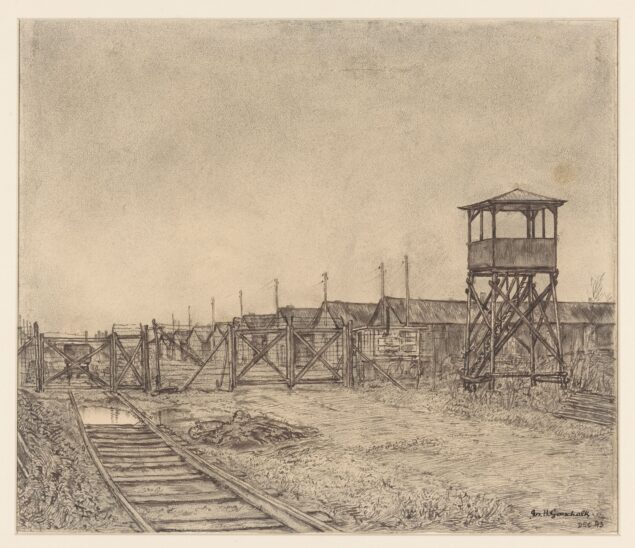News:
Tracking Down the Provenance of Old Masters: The Research in a Few Basic Steps
By Jona Mooren and Eelke Muller
Introduction
Provenance research has long had a somewhat dull image. It conjures up images of kilometers of box files and card index systems. Of course, there will be days on which a researcher struggles through piles of old papers without finding a single relevant piece of data. More often, however, provenance research feels, as is often said, like detective work. It involves hunting for clues and traces, pulling a thread to see where it leads. When these efforts yield results, worlds may open up before your eyes. You find yourself transported into the lives of figures from the past, reading their letters, exploring their houses, seeing what they saw. Take the research on paintings from the collection of Joseph Henri Gosschalk (1875–1952), conducted a few years ago for the Dutch Restitutions Committee (RC). Gosschalk was a Dutch artist, collector, and dealer from a Jewish background. He collected both Old Masters and modern art and was active in The Hague’s art scene. A few clicks on Delpher, a search engine for Dutch historical newspapers, takes you to the home of this “Hague Bohemian”, who owned paintings by Van Beijeren, Bruegel, Van Goyen, Grimmer, De Momper, Potter, Saftleven, and Saverij. Gosschalk showed his collection to whoever wanted to see it and lent or donated works to numerous museums. Being of Jewish descent, Gosschalk found himself in peril in the Second World War. He was interned in Barneveld in February 1943. In the same year, in September 1943, the occupying forces transported those held at Barneveld to Westerbork transit camp. There, Gosschalk made many drawings of the camp and its surroundings. A fellow inmate and artist wrote after the war:
“The pictures he was able to capture from the bleakness and desolation of that ghastly, barren land are among the most beautiful in his oeuvre (…)”
 Joseph Henri Gosschalk (1875–1952), Entrance to Kamp Westerbork, 1943
Joseph Henri Gosschalk (1875–1952), Entrance to Kamp Westerbork, 1943
Rijksmuseum, Amsterdam
Provenance research now has the wind in its sails. Its value has been increasingly recognized over the past few decades, both within and beyond the art history world. Once a modest part of art history, important mainly for issues of attribution and authenticity, today we find universities establishing chairs in this discipline. That provenance research has developed into a research field in its own right has to do with recent claims by families whose property was stolen by the Nazis. The past 25 years have seen a growing social awareness of these issues. The museum world too has come to appreciate the importance of verifying the provenance of new acquisitions – and of works that have long been part of the collection. This provenance research is an ethical duty, enshrined in several national and international professional codes and guidelines, such as the Dutch Code of Ethics for Museums and the ICOM Code of Ethics. Art acquisition funds such as the Rembrandt Society also attach great importance to provenance research. In the Netherlands, museums have subjected their collections to close scrutiny in the Museum Acquisitions projects. The Netherlands currently has several institutions dedicated to provenance research on cultural goods. Key players include the NIOD Institute for War, Holocaust and Genocide Studies (NIOD), and the Cultural Heritage Agency (RCE). In addition, several museums, such as the Rijksmuseum and the Mauritshuis, also regard provenance research as one of their core responsibilities.
 American Troops Find Loot Hidden in Church, Germany, 24 April 1945
American Troops Find Loot Hidden in Church, Germany, 24 April 1945
National Archives and Records Administration, Washington
The discipline is expanding, now embracing research on objects from former colonies and on human remains – it is a vibrant field. But how exactly should you go to work, starting out as a provenance researcher? This article does not claim to provide an exhaustive guide, but provides some basic steps and sources for provenance research on works by Old Masters that were plundered under the Nazi occupation. New researchers should note that while certain avenues can be suggested, much will depend on the individual’s creativity and detective work. Those who would like to read a more comprehensive handbook have several options. One book, published in 2001 but still extremely useful, is the AAM Guide to Provenance Research by Nancy Yeide et al. Also informative is the more recent publication edited by Arthur Tompkins, Provenance Research Today: Principles, Practice, Problems (2021). In the Netherlands, the RCE is to publish its own research guide in the autumn of 2023. For the methodology of provenance research on objects from former colonies, the NIOD, the National Museum of World Cultures, and the Rijksmuseum published the report Clues, Research intro provenance history and significance of cultural objects and collections acquired in colonial situations. The University of Amsterdam is launching a postgraduate course on Restitution Studies next year, in which provenance research will be a key component.
To read the rest of this article, whose section headings are 'Object research', 'Internal sources', 'External sources' and 'Problems and Challenges', please click on the link below.


